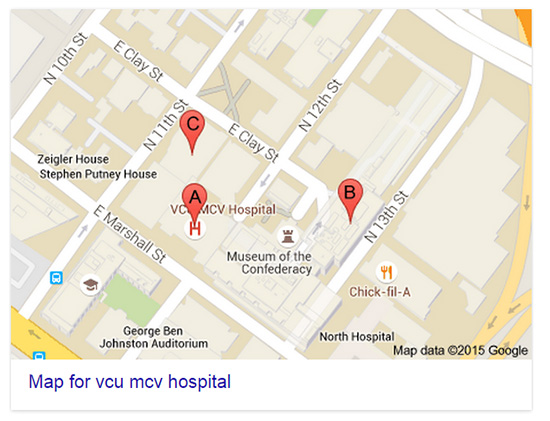According to a recent Google report, four in five people perform geo-specific searches to find information. Indeed, my own usage primarily includes looking for nearby businesses that have what I am looking for.
Job seekers do the same. More than 70 percent use a search engine like Google to find your jobs. And where they ultimately end up, if your site is optimized correctly, is on your career site.
The most important factor to ranking your career site or your job listings in top positions in search will always be external links, or links from other websites that point to your site.
Credibility means everything in ranking well.
I’ll touch on this more below, but external links have always been a powerful ranking influence and will likely continue to be far into the future.
When you consider optimizing content for local search results, however, things get a little more involved. Here are some things to do to boost your rankings:
1. Add a Google My Business listing.
Since most people use Google as their search engine of choice, it benefits your organization to create a Google My Business page.
Google My Business highlights your website in pack listings of search results, as outlined in red in the image below. In addition, your business is added to Google Maps and to Google Plus where users can review your organization.

Creating a business page is a detailed process and takes up to two weeks before you see results; that’s because Google uses postcard verification. Yes, they send you an actual postcard in the mail containing verification information.
Once verified you can add information to your business page that appears on Google Plus, like a detailed description, the link to your site, photos, and so on. Like I said, it also allows visitors to post reviews about your organization, to which you can respond after verifying your account.
2. Add Local Keywords to Your On-Page SEO.
This works similar to standard on-page optimization, but more weight is given to ranking content optimized for local search results, so it’s necessary to include geo-specific information about your organization in key areas of your homepage.
In addition to your keyword optimized content you want to have your city and state in areas like title tags, H1 tags, the URL if it makes sense, in your page content, and with any image ALT attributes.
You may also want to embed a Google map, say, in your footer, or somewhere easy to spot. Google maps provide easy-to-spot markers to identify the location of your organization.

To help with ranking, your Google Maps embed code, which is an iframe, has to be wrapped in schema markup so search engines can give proper credit to the content.
Since iframes contain nested URL of another site and displays that site’s content, in this case, Google Maps, crawl bots credit the content within the iframe to the original page URL, so that iframe code needs further markup wrapped outside of it to aid ranking identifiers.
Schema markup is similar to your local on-page markup in that it contains HTML tags that identify your content, but it uses location identifiers that can be read across Google, Bing, and Yahoo.
In the above scenario it would look something like this:
Schema is also great for adding NAP content, which by doing so will help in gaining those pack listings in the image above. NAP content is Name, Address, and Phone Number. It’s important that this information is consistent across your domain to avoid confusing crawl bots.
3. Encourage Reviews About Your Organization.
If you’ve added a Google My Business page, you already have a place to collect reviews about your culture and work environment. This is a unique and FREE way to encourage employees to add comments about your workplace and boost your employer brand.
The benefit of having reviews on your Google Plus page is that they stand out in the search results, making it easy for candidates to quickly assess whether or not you are truly the employer of choice for them.
Important to note is that reviews count for about as half as much as external links do in importance to ranking.
You can clearly see review ratings and review counts of businesses in the search result pack listings.

Ultimately by encouraging reviews you are increasing CTR to your career site and job listings. This drives more traffic to your site and lets you collect more data on potential candidates.
It also gives great insight into how your employees view your employer brand and lets you assess any changes that need to be made.
Providing a link on your career page to the review page of your business listing on Google Plus is the easiest way to encourage employee and client reviews.
4. Build Links with Other Local Websites in Your Industry.
With standard SEO, active links to your site win the popularity contest, which is mostly what ranking is. Google promotes the best sites with the most relevant content to a user’s query. That largely relies on how other high-profile sites regard you, along with how many.
One link from a highly regarded and well-ranked website in your industry counts toward your own ranking. The more quality and relevant links, the better you look in Google’s eyes.
With local search SEO, however, you don’t need high-profile links so much as you need links from other local organizations or websites that provide similar content to yours.
It can be something as simple as a citation on a directory. Say for instance you are one hospital among many in your area. Someone clicks on Healthgrades.com and sees your NAP info. As long as that info matches precisely what you have across your domain, it counts as a citation.
Of course standard links work and are encouraged, but citations are just as potent ranking factors.
5. Add a Responsive Design.
You probably saw this one coming, but having your site viewable on several devices is a huge factor in ranking well today. Back in April Google began giving preferential ranking to websites that had a responsive design.
I’m not going to go in depth on this topic because I’ve done so in spades in the past. For great info on how to make your career site or job search responsive and why you should do it now, go here, here, here, and here.
More and more people are using smartphones in their daily search use. More and more are including job search in that usage. If your site doesn’t render correctly on a smartphone or tablet, you are losing the hiring race to your competitors that have a responsive design. Which means you are losing big dollars to inefficient recruiting.
With a responsive career site and job search, and even mobile apply, you create another avenue for traffic that would otherwise skip you over.
And since having a responsive design is an important part of ranking well in mobile search, it is vital that your site is responsive to mobile devices.
TL;DR
Local SEO is an important factor to capturing the attention of talent within your community.
Adding some things to your content strategy to improve your chances of ranking well in search engines are as easy as:
Creating a Google My Business page.
Adding location signals to your on-page content.
Gathering reviews on your FREE Google Plus review page.
Adding citations to local directories and getting links from relative websites.
And making your recruiting platform responsive to mobile devices.
It’s not a hard process but it does take time, as with any SEO strategy. But you will reap the benefits of implementing these actions in your strategy to drive more traffic to your career site and job listings.






Leave a Reply